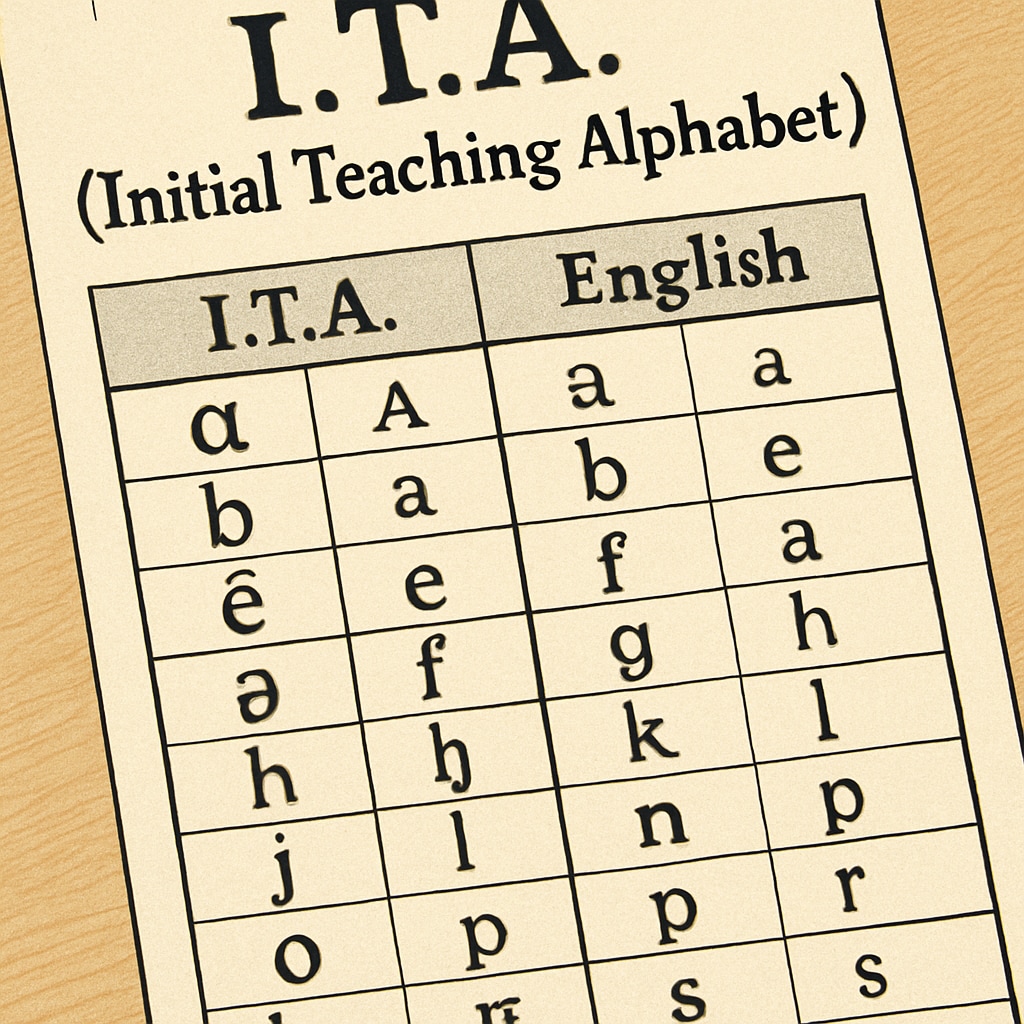The ITA (Initial Teaching Alphabet) method, introduced in the 70s as an educational innovation, promised to simplify literacy for young learners. However, this seemingly progressive teaching approach left a significant number of students with lifelong spelling issues, raising questions about its long-term impact on literacy. While ITA aimed to improve early reading comprehension, its unintended consequences have highlighted the risks of experimental education methods.
What Was the ITA Method?
The ITA (Initial Teaching Alphabet) was a phonetic alphabet system designed to help children learn to read more quickly. Developed by James Pitman in the 1950s, ITA replaced traditional English orthography with a simplified set of 44 symbols, each representing a distinct sound. Educators believed this method would eliminate confusion caused by the irregular spelling patterns of English. By the 1960s and 70s, ITA gained widespread adoption in schools across the UK, the US, and other English-speaking countries.
While ITA did accelerate early reading development, its reliance on non-standard spellings created challenges when students transitioned to traditional English orthography. Words in ITA did not align with their conventional spellings. For instance, the word “cat” might be written as “kat,” aligning with its phonetic sound but diverging from standard English. This mismatch planted the seeds for spelling issues that persisted into adulthood.

How ITA Contributed to Lifelong Spelling Challenges
While ITA succeeded in its goal of simplifying reading for beginners, its long-term effects were less positive. Many students who learned through ITA struggled to adjust to conventional English spelling later in their education. This was because ITA created a mental framework that prioritized phonetics over standard spelling rules. As a result, students found it difficult to “unlearn” the ITA system and adapt to the complexities of English orthography.
For example, a child might learn the ITA spelling “fingger” for the word “finger.” When transitioning to standard English, they would need to replace this phonetic spelling with the conventional one—an additional cognitive step that many found challenging. This struggle often persisted into adulthood, leading to frequent misspellings and reduced confidence in written communication.
Research has since shown that early exposure to consistent spelling patterns is critical for long-term literacy. The ITA method, while well-intentioned, disrupted this process by introducing a temporary system that conflicted with standard English. As a result, the method inadvertently contributed to what some experts now term “educationally induced spelling difficulties.”

Lessons Learned from the ITA Experiment
The ITA experiment offers valuable lessons for modern education, particularly regarding the risks of implementing untested teaching methods on a large scale. While innovation in education is essential, the long-term consequences of such methods must be carefully considered. ITA’s failure to account for the broader context of English literacy highlights the importance of integrating new approaches with established knowledge.
Today, education researchers emphasize the need for evidence-based teaching methods. Phonics-based approaches, which emphasize the relationship between sounds and letters within standard spelling systems, have proven to be more effective in fostering lifelong literacy skills. These methods avoid the pitfalls of ITA by aligning early learning with the complexities of traditional orthography from the outset.
The Ongoing Impact on ITA-Educated Adults
For many adults who were taught using ITA, the effects are still felt today. Common issues include difficulty with spelling, reliance on phonetic approximations, and a lack of confidence in written expression. While some individuals have successfully retrained themselves, others continue to struggle with the legacy of this educational experiment.
Support for these individuals often comes in the form of adult literacy programs, which help address gaps in spelling and writing skills. However, the broader lesson from ITA is clear: educational methods must prioritize long-term outcomes over short-term gains. As a result, the ITA experiment serves as a cautionary tale for educators and policymakers alike.
Readability guidance: Short paragraphs and clear transitions have been used throughout the article to enhance readability. Lists and examples have been incorporated where appropriate to break down complex ideas. Overly technical language has been avoided to ensure accessibility for a broad audience.


